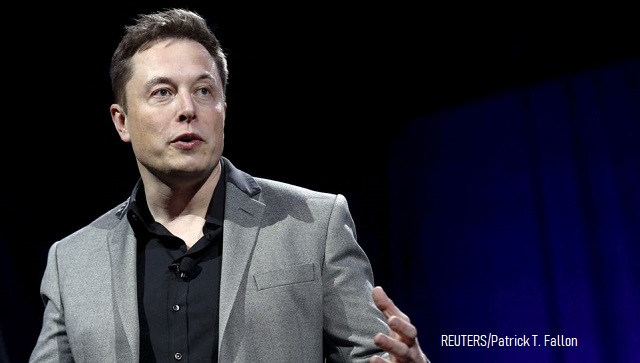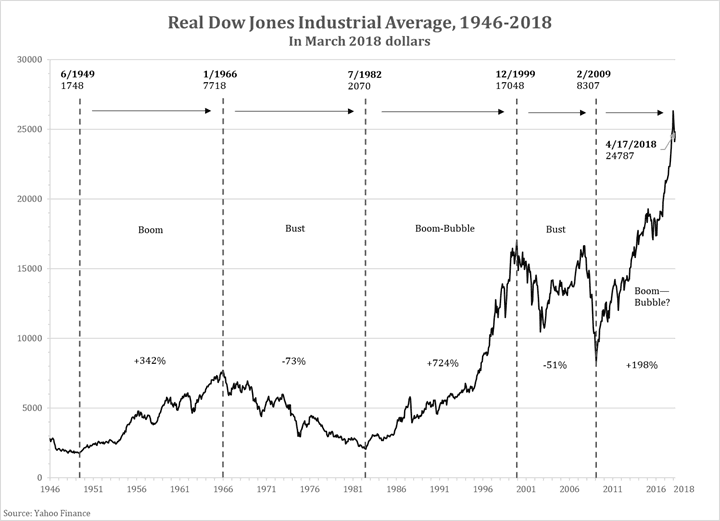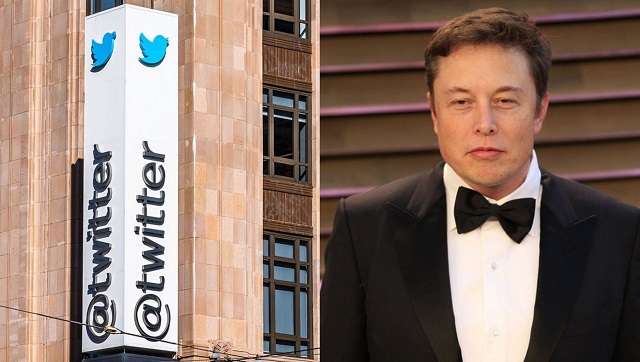Popular Pill Exposed; Was This Intentional Mass Murder?
By MERCOLA Take Control of Your Health
- In 2021, McKinsey & Company, one of the largest consultants to corporations and governments worldwide, settled a lawsuit brought by 47 state attorneys general over its role in the U.S. opioid crisis
- A U.S. House investigation reveals McKinsey was advising the U.S. Food and Drug Administration on the safety of opioids, while at the same time advising Purdue how to maximize sales
- Jeff Smith, a senior McKinsey consultant, worked on a risk evaluation and mitigation strategy (REMS) for OxyContin while simultaneously advising the FDA about the drug’s safety
- McKinsey promoted its FDA connections when pitching services to its pharmaceutical clients. The FDA, meanwhile, claims it had no idea McKinsey was working with Purdue
- Purdue knew the dangers of its drug, covered it up, and hired FDA insiders to advise its sales strategy and how to influence the FDA. They also hired Publicis to manage its marketing. Publicis, the world’s largest PR company, funds and partners with “fact checking” organizations to suppress and censor the truth
In 2021, McKinsey & Company, one of the largest consultants to corporations and governments worldwide, settled a lawsuit brought by 47 state attorneys general over its role in the U.S. opioid crisis. The firm agreed to pay $573 million in fines1 for driving up sales of Purdue Pharma’s OxyContin painkiller, even as Americans were dying in droves.
Between 1999 and 2019, nearly 500,000 Americans died from overdoses involving opioid drugs,2 and false advertising and bribery were at the heart of this tragedy. As reported by The New York Times:3
“McKinsey’s extensive work with Purdue included advising it to focus on selling lucrative high-dose pills, the records show, even after the drugmaker pleaded guilty in 2007 to federal criminal charges that it had misled doctors and regulators about OxyContin’s risks. The firm also told Purdue that it could ‘band together’ with other opioid makers to head off ‘strict treatment’ by the Food and Drug Administration.”
Worse Than We Thought
We now find out that the situation is even more corrupt than we previously thought. A U.S. House investigation4,5,6 into McKinsey, based on materials obtained through the discovery process of this and other lawsuits, has revealed McKinsey was advising the FDA on the safety of opioids, while at the same time advising Purdue how to maximize sales.
In one instance, McKinsey wrote “scripts” for Purdue to use in its meeting with the FDA to discuss the safety of OxyContin in pediatric populations. In another, Jeff Smith, a senior McKinsey consultant, worked on a risk evaluation and mitigation strategy (REMS) for OxyContin while simultaneously advising the FDA about the drug’s safety.7
As noted by investigative journalist Paul Thacker,8 “Just think about that for a moment — for years McKinsey played both cop and robber.” As reported by The New York Times, April 13, 2022:9
“Since 2010, at least 22 McKinsey consultants have worked for both Purdue and the FDA, some at the same time, according to the committee’s 53-page report …
The firm provided no evidence to the committee that it had disclosed the potential conflicts of interest as required under federal contracting rules — an ‘apparent violation,’ the report said.
McKinsey also allowed employees advising Purdue to help shape materials that were intended for government officials and agencies, including a memo in 2018 prepared for Alex M. Azar II, then the incoming secretary of health and human Services under President Donald J. Trump.
References to the severity of the opioid crisis in a draft version of the memo, the documents show, were cut before it was sent to Mr. Azar.
‘Today’s report shows that at the same time the FDA was relying on McKinsey’s advice to ensure drug safety and protect American lives, the firm was also being paid by the very companies fueling the deadly opioid epidemic to help them avoid tougher regulation of these dangerous drugs,’ Representative Carolyn Maloney, the New York Democrat who chairs the committee, said in a statement
[ … ]
A bipartisan group of lawmakers last month introduced legislation10 aimed at preventing conflicts of interest in federal contracting, citing McKinsey’s experience with Purdue and the FDA.”
The FDA, in response, has stated that it “relies on its contractors to assess and report potential conflicts of interest,” The New York Times reports.11 In other words, it’s just pointing fingers and refusing to take responsibility for working with advisers that clearly could, and should, be suspected of having ulterior motives, based on their client base.
Isn’t it obvious that McKinsey, working to improve sales for its opioid-making clients, might give the FDA biased advise on behalf of those clients? Remarkably, in October 2021, the FDA wrote12 to senators claiming they had no idea McKinsey was even working for Purdue, and didn’t find out about it until media reported it in early 2021.
It seems beyond irrationally foolish that the press could find out about it, but not the FDA — somewhat like the head of the CDC, Dr. Rochelle Walensky, going on CNN and quoting Pfizer press releases as factual data.
McKinsey Advised FDA on Opioid Safety
The FDA hired McKinsey as an adviser in 2011. The company worked with the FDA office overseeing drug companies plans to monitor safety of risky products such as opioids, and internal documents show that, on multiple occasions, McKinsey promoted its FDA connections when pitching services to its pharmaceutical clients.13
For example, in a 2009 sales pitch, McKinsey wrote that it provided direct support to regulators, “and as such have developed insights into the perspectives of the regulators themselves.”14
In a 2014 email to Purdue’s chief executive, McKinsey consultant Rob Rosiello wrote, “We serve the broadest range of stakeholders that matter for Purdue. One client we can disclose is the FDA, who we have supported for over five years.”15
Evidence also suggests McKinsey took “steps to limit material that could be subpoenaed” once Purdue was sued, The New York Times reports.16 In one instance, printed hardcopies of slide decks were sent to Purdue instead of being emailed because they knew Purdue staff would be deposed and didn’t want their email correspondence to “get sucked into it.”
Did McKinsey Influence FDA Commissioner?
The Interim Majority Staff report17 by the Committee on Oversight and Reform, titled “The Firm and the FDA: McKinsey & Company’s Conflicts of Interest at the Heart of the Opioid Epidemic,” published April 13, 2022, also includes emails in which McKinsey employees claim to have influenced an opioid safety speech by then-FDA commissioner Dr. Scott Gottlieb.
Gottlieb denies the accusation, but the fact that McKinsey was working so intimately with the FDA means they certainly would have been capable of such influence. Gottlieb also has financial ties to the opioid industry, having received $45,000 in speaker’s fees from companies that manufacture and distribute opioids.18
In 2012, Gottlieb also wrote a Wall Street Journal essay, attacking the Drug Enforcement Administration (DEA) for pursuing the criminal activity of opioid distributors, saying it would burden patients, “including those with legitimate prescriptions who may be profiled at the pharmacy counter and turned away.”19
Intent to Harm
What we have here is a picture of gross conflicts of interest with an apparent intent to harm. Purdue Pharma was as crooked as they come, conducting sham studies and bribing doctors to prescribe its highly addictive opioid, while its consultant, McKinsey advised the FDA on the drug’s safety.
At the same time, Purdue also worked with the Publicis Groupe — the largest PR company in the world as of November 202120 — which funded the startup of NewsGuard, a “fact checking” group that rates websites on criteria of “credibility” and “transparency.” In April 2021, Publicis partnered with NewsGuard specifically “to fight the ‘infodemic’ of misinformation about COVID-19 and its vaccines.”21
NewsGuard’s health-related service, HealthGuard,22 is also partnered with the Center for Countering Digital Hate (CCDH) — a progressive U.K.-based cancel-culture leader23 with extensive ties to government and global think tanks that has labeled people questioning the COVID-19 vaccine as “threats to national security.”
At the beginning of May 2021, the Massachusetts attorney general filed a lawsuit24,25 against Publicis Health, accusing the Publicis subsidiary of helping Purdue create the deceptive marketing materials used to mislead doctors into prescribing OxyContin.26,27,28,29
Like Purdue, Publicis also cashed in on the opioid addiction it helped create by pitching its services to organizations working to end addiction. As reported by Forbes,30 the agency “won the account to work on drugfree.org after touting how it’s been ‘immersed in the evolving national opioid medication dialogue going on between pharma companies, the government and FDA, and the public via inside access as a trusted and informed consulting partner.’”
So, to summarize, Purdue knew the dangers of its drug, covered them up, hired FDA insiders to advise its sales strategy and influence the FDA, and is connected with a PR company that had the ability to suppress and censor negative news to manage its marketing. It’s hard to describe this scheme as anything but intentional mass murder.
The Spin Doctors
The reality may even be worse, and much larger, than that, seeing how Publicis is also a partner of the World Economic Forum (WEF),31 which is leading the call for a “reset” of the global economy and a complete overhaul of our way of life.32
As detailed in the featured video, Publicis’ fingerprints can be found throughout the net of censorship and misdirection that is now being cast across the digital landscape. As the No. 1 PR company in the world, Publicis has just the right credentials and influence to pull off a deception of this size.
It’s part of an enormous network that includes international drug companies, fact checkers and credibility raters, Google, Microsoft, public libraries, schools, the banking industry, the U.S. State Department and Department of Defense, the World Health Organization and Disney, just to name a few. As noted by investigative reporter David Marks in “How PR Giant Publicis Promotes Greed, Deception on Behalf of World’s Most Powerful”:33
“The essential skill of these expert spin doctors is their ability to fabricate a favorable interpretation of damaging information or activity or diminish the impact of the truth.
Through tried and true psychological ploys, repetition of false information or casting doubt on factual realities, ad agencies and PR firms target those who need to be influenced on behalf of their clients …
An examination of one of the largest entities neck-deep in managing these mass psychological operations reveals the depth of the dysfunction afflicting the planet. The vast activities of the Publicis Groupe demonstrate how the tentacles of greed, profit and privilege connect the catastrophic agendas of the most powerful enterprises on Earth …
Using sophisticated social psychology and incorporating the cutting edge of artificial intelligence, Publicis PR experts are masters of damage control, the manipulation of words and people, and of selling the unsellable. Publicis is organizing influential activities worldwide, overtly revealing its mission and priorities.
… [Its] website reveals who actually benefits from the company’s services: ‘The entire Publicis Groupe transformation was designed to put clients at the center of all we do. Their needs and objectives drive the solutions we provide in order to help them win and grow’ [ … ]
In considering the range of activities Publicis engages in, the dots are so close there is no need to connect them. The PR giant’s methodology is transparent.
Whether promoting opioids or pushing vaccines, rebranding status quo profiteering as a Great Reset, supporting cigarette sales, disguising the true nature of the fossil fuel industry, increasing soft drink consumption or covering for assassinations — Publicis has all the skills and facilities to create whatever fabrications are needed to sell products and influence how their wealthy collaborators are viewed.
The Publicis Groupe and its allies are at the hub of a worldwide insidious, destructive disinformation campaign, relying on the duplicitous ways of advertising and public relations in the loyal service of clients.”
A Plan to Drug the Useless Eaters?
As a WEF partner and global PR machine for some of the most powerful industries on the planet, it seems reasonable to assume Publicis is helping to coordinate the WEF’s Great Reset agenda. Sadly, that includes not only the management and control of the peoples of the earth, but also the elimination of “undesirables.”
In a 2015 interview (video above), Yuval Noah Harari, a history professor and adviser to WEF founder Klaus Schwab, discussed what Schwab refers to as The Fourth Industrial Revolution (i.e., transhumanism), noting that we’re now learning to “produce bodies and minds” (meaning augmented bodies, and cloud and artificial intelligence-connected minds) and that one of the greatest challenges we face will be what to do with all the people that have become obsolete in the process.
How will unaugmented people find meaning in life when they’re basically “useless, meaningless”? How will they spend their time when there’s no work, no opportunity to move up in some kind of profession? His guess is that the answer will be “a combination of drugs and computer games.”
This raises a disturbing question. Was the opioid crisis the result of an intentional plan — a conspiracy in the literal sense of the word — to hook the masses on an addictive drug? This is purely speculative, of course, but it surely fits in with The Great Reset agenda as a whole.
If people are addicted, the drug and medical industries make money (and they’re without doubt part of The Great Reset network), and if people die, well, that’s in accordance with The Great Reset plan too, as they insist there are too many “useless eaters” on the planet, and they either must be managed or eliminated.
Publicis Is Part of the Global Monopoly
In closing, it’s worth noting that Publicis is partially owned by the Vanguard Group,34 one of the two largest asset management firms in the world. Together with BlackRock, Vanguard has a hidden monopoly on global asset holdings and exerts control through their ownership of some 1,600 American companies.35
Combined, BlackRock and Vanguard own nearly 90% of all S&P 500 firms.36 To learn more about how Vanguard and BlackRock own just about everything in the world, and have monopoly control over all industries, check out the 45-minute video above, “Monopoly — Follow the Money.”
In short, the idea that there is competition in the marketplace is a cleverly disguised illusion. In reality, everything is controlled by a small group of asset managers that win no matter what. The end goal is to own and control all the world’s assets, which includes people.
The WEF slogan “You’ll Own Nothing and Be Happy” really summarizes The Great Reset plan for mankind. They will own everything; you will own nothing, not even your own body, and you’ll be too drugged up and lost in a make-believe computer game world to realize you’re a slave. If they can somehow make a profit from your useless existence, they’ll let you live. If they can’t, you’ll be eliminated. That’s really what the plan comes down to.
The plan for global authoritarianism is advancing with each passing day, but all is not lost yet. By informing ourselves and sharing what we know with others, we can reach the critical mass needed to end their plan and take back control.
It’s going to require standing together, unified in favor of freedom and liberty. It’s going to require legal and legislative efforts to weed out the corruption and infiltration that has occurred throughout the corporate world and our governments. It’s going to require honest men and women to step into positions of power that they never wanted. It may take a lot of time and effort, but if we want our descendants to experience freedom, no price can be too great to pay.
Sources and References
RELATED TWEET:
Opiates have gutted rural America, structurally and spiritually: pic.twitter.com/2Z90mlYHQw
— Kyle Kashuv (@KyleKashuv) April 24, 2022
EDITORS NOTE: This MERCOLA column is republished with permission. ©All rights reserved.













